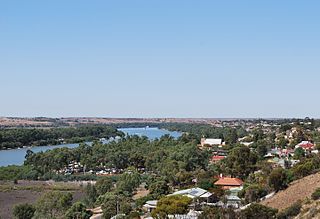The Ngaiawang were an indigenous Australian people of South Australia. They are now considered extinct.
The Girramay were an Australian Aboriginal tribe of northern Queensland.
The Ngarkat (Ngargad) were an indigenous Australian people of the state of South Australia, now believed to be extinct.
The Bibulman (Pibelmen) were an indigenous Australian people of the southwestern region of Western Australia
The Mandi, otherwise known as Manthi, were an indigenous Australian people of Western Australia.
The Jadira are a people and territory mentioned by Norman Tindale in his classic ethnographic map of Australian tribes. The status of Jadira in the sense defined by Tindale has been recently questioned by Paul Burke.
The Ngandi were an indigenous Australian people of the Northern Territory. The Ngandji are another tribe, and the two are not to be confused.
The Awarai (Warray) are an indigenous Australian people of the Northern Territory.
The Panyjima are an indigenous people of the Pilbara region of Western Australia.
The Unggumi, also written Ongkomi, are an indigenous Australian people of the Kimberley region of Western Australian.
The Ngolibardu, otherwise written, Ngulipartu, were an indigenous Australian people of Western Australia.
The Ngaatjatjarra are an Indigenous Australian people of Western Australia.
The Inawongga were an indigenous Australian people of the Pilbara region of Western Australia.
The Malngin were an indigenous Australian people of Western Australia. The Malngin language was a dialect of Gurindj.
The Yawarrawarrka were an in indigenous people of South Australia.
The Bidjara or Pitjara were an indigenous Australian people of the state of Queensland. They are to be distinguished from the Bitjara and Badjiri.
The Punthamara were an indigenous Australian people of the state of Queensland.
The Marrago were an indigenous Australian people of the state of Queensland. They may have been a subgroup of the Mayi-Kutuna.
The Kungadutji were an indigenous Australian people of the state of Queensland.
The Dhirari or Tirari were an indigenous Australian people of the state of South Australia. They are not to be confused with the Diyari, though the Dirari language is a dialect of Diyari.






